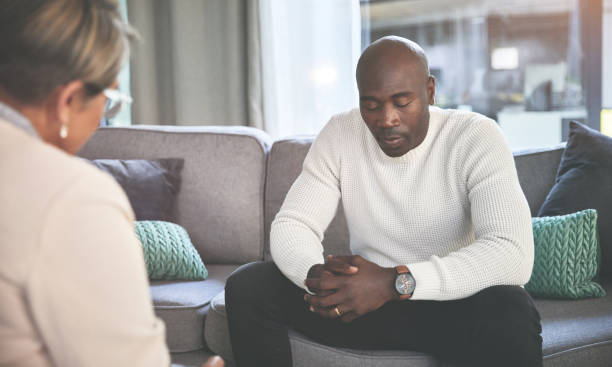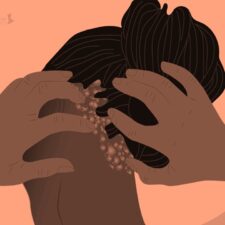
For many, the path to healing from trauma, sexual assault, and emotional pain begins from the inside out—whether it’s the lasting impact of childhood wounds or the silent weight of anxiety. therapy
BlackDoctor.org spoke with Dr. La Keita Carter, a Maryland-based psychologist, to explore trauma, the stigma surrounding mental health, and why cultural competence in therapy isn’t just beneficial—it’s essential.
What Trauma Actually Is
Dr. Carter clarifies that not everything is trauma. It’s not about spilled coffee or a bad workday. Clinically, trauma refers to events that pose a serious threat to your physical safety or your life, like sexual assault, abuse, or violent accidents.
“That can include the possibility of death, the loss of bodily autonomy, sexual trauma, or physical harm. It can even involve losing the ability to communicate, like a loss of language, as part of the body’s response to overwhelming stress,” Dr. Carter explains.
The aftermath of trauma can be subtle. In fact, people often miss it in themselves.
“One of the initial steps is even recognizing that what you experienced was trauma. Because sometimes we go through so many traumatic experiences back-to-back that we actually start to see them as normal, especially when they happen to us as children,” Dr. Carter adds. “For example, children who are molested at a very young age might view that engagement as something every brother does with his sister, or what every father does with his daughter. They might not even realize that it’s not a typical or healthy familial relationship until much later, like in their teenage years, when they’re talking with a friend and they say, ‘Oh, it occurred to me that my friend didn’t have this kind of relationship with her dad—the one I had with mine.’”

The first step toward healing? Recognizing it was trauma to begin with.
How Trauma Shows Up
Everyone reacts to trauma differently. Some people become immobilized by fear or anxiety. Others seem to function fine but suppress what they went through, tucking it into a mental box and pushing forward. While compartmentalizing can help temporarily, long-term avoidance backfires.
“Eventually, we do have to work through the traumas we’ve experienced—otherwise, they sneak up on us and come out of nowhere,” Dr. Carter shares. “Someone might say something that seems totally benign or neutral, and suddenly we have a major reaction to it. Like someone might say, ‘Oh, my pet turtle died,’ and all of a sudden we’re overwhelmed.”
According to Dr. Carter, these types of responses are usually the result of something that’s been sitting on that shelf—something you haven’t addressed. “That statement, or that experience, or whatever you just saw has opened the box that’s been sitting there for months—or even years,” she notes.
Dr. Carter also stresses that not all signs are visible. “People don’t always show anxiety on their faces or in obvious ways.”
The warning signs of trauma are diverse:
- Emotional: Irritability, anxiety, apathy, sudden anger.
- Physical: Chronic fatigue, nausea, headaches, muscle tension.
- Behavioral: Social withdrawal, changes in eating/sleeping, increased substance use.
- Cognitive: Difficulty concentrating, memory lapses.
Sometimes, it’s only noticeable to those living with you. For others—especially those who live alone—it’s critical to become a student of yourself. Notice your patterns. If you’re waking up at three in the morning every day without a reason, that’s a signal worth paying attention to.
RELATED: 5 Signs You Need A Therapist

Navigating Stigma
Although therapy and treatment are much more accepted now as reasonable things to do when you’re in need, that hasn’t always been the case. Many people dealing with mental health challenges often have to navigate the stigma that comes along with it.
Dr. Carter points to two kinds of stigma:
1. Internal stigma- “Crazy people have therapists.”
“We hold these ideas about who goes to therapy—like, ‘crazy people have therapists’ or ‘only crazy people go to therapy.’ So when it comes time for us to actually need one, we have to fight off that internal dialogue before we can even reach out to someone. Because if for the last 25 or 45 years I’ve believed that only crazy people go to therapy—and now I’m considering going to a therapist myself—what does that mean? Either I’m crazy, or the belief I’ve held for so many years isn’t true. And sometimes it can be really hard to challenge the thoughts, beliefs, and values we’ve held onto for so long,” Dr. Carter notes.
2. External stigma- deeply rooted in cultural beliefs
“A lot of the stigma is internal—what’s going on inside of us. However, much of it comes from what we’ve heard in our communities and families,” Dr. Carter explains. “For example, you might have heard a grandmother say, ‘You know, she’s crazy—she talks to that guy on the street about things in her head.’ That little comment you overheard when you were six years old sticks with you. And now, at 32, you don’t even know why, but you just know that crazy people go to therapy. These are the kinds of subtle messages we don’t even realize have impacted us, but they have.”
To break stigma, Dr. Carter says we need to start thinking about therapy differently.
“Therapy is a treatment process. It’s no different than getting a cast when your leg is broken,” she explains. “It’s no different than going on dialysis if your kidneys aren’t working properly. It’s no different than getting a filling if you have a cavity. These are treatment options for physical problems, and therapy is the treatment option for mental health challenges like depression, anxiety, trauma, and more. That includes talking to someone, and sometimes taking medication. And the research shows that therapy combined with medication is more effective than either one alone.”
RELATED: 3 Benefits of Seeing a Black Therapist
Therapy as a Relationship, Not a Visit
Mental health care isn’t a one-and-done appointment.
“Finding a mental health provider isn’t like finding other doctors. Most of your medical providers you see once or twice a year. But a mental health provider? Traditional therapy is once a week. That’s a relationship,” Dr. Carter adds.
It’s also deeply relational. If you can’t be honest with your therapist, the healing won’t happen. That’s why Dr. Carter urges people to interview their providers, ask questions about their approach, and take the time to find someone who aligns with their values.
“You’ll be sharing your deepest struggles with them. If you can’t be honest with your therapist, it’s not going to work, just like you wouldn’t lie to your gynecologist and expect proper treatment. The only way they can help you is by knowing your symptoms. Sure, sometimes we can see anxiety, but other times we can’t—you have to tell us. Everyone shows things differently, so your honesty is key,” she notes.
Cultural Competency in Mental Health
Dr. Carter is passionate about cultural humility, especially when treating communities of color. She points to intergenerational trauma and mistrust in the medical system, such as the lingering impact of the Tuskegee Syphilis Experiment, as barriers to seeking help.
“None of the participants, referred to as ‘subjects’ back then, in the Tuskegee Syphilis Study are alive today. However, we still feel the effects of that experiment. We have all kinds of medical hesitation: vaccine hesitation, medication hesitation,” she notes. “That hesitation exists because harm was done to us by the medical community—harm that was sanctioned by the federal government. That can’t be lost on us. A government that was supposed to be ‘for the people’ said, ‘Yeah, let’s experiment on this marginalized group. On this underserved group. On this group that’s already lacking in resources. On this group that has never had a fair start since being brought to this country.’ That’s a trauma. That impact didn’t only affect the men and women in the study—it also affected their families. They had children. Syphilis was passed on to the next generation. That’s a lot of trauma.”
To combat this, Dr. Carter says it’s important that the medical community does what it needs to do to make amends and to be sensitive to the fear and hesitation that now lives in our bloodline, not from any fault of our own.
She also calls out the difference in cultural frameworks: many Black, Native, and Asian cultures are collectivist, meaning decisions aren’t made in isolation.
“We can’t dismiss that hesitation. We can’t dismiss that fear—because it’s real. It existed for their family members and was passed along. Part of culturally sensitive treatment is recognizing that my group didn’t experience this. So I have no idea what it feels like to be worried that the government that’s supposed to be ‘for us and by us’ may not actually be for us, or still isn’t,” Dr. Carter adds. “That means we have to take a more patient and sensitive approach, and not just assume… That would be a culturally insensitive response to someone’s hesitation around treatment.”
Culturally sensitive care must also account for different definitions of health, healing, and family.
“Cultural humility is about being able to see the world from another person’s point of view—to understand their experience through their lens,” she shares. “Another way to practice cultural sensitivity is to consider that there are different versions of ‘healthy.’ European standards of healthy are not the same as African or Black standards—not in terms of body type, and not even in terms of mental or family wellness.”
Cultural norms differ. One isn’t better than the other—they’re just different.
“For example, when a patient says, ‘I can’t just cut off my sister—we don’t disown people in my family,’ that’s rooted in culture. Even if that sister is harmful to them, the decision affects more than just them—it impacts their parents, nieces and nephews, and their children,” Dr. Carter explains. “They have to consider all of that before deciding to cut someone off. That’s a collectivist mindset. The individualist approach might be: ‘She’s bad for me, so she’s out.’ That might be fine in individualistic cultures, but not in collectivist ones.’”
RELATED: Why You Don’t Have To Be “Crazy” To Go See a Therapist

How to Find the Right Therapist
Representation matters—unfortunately, it’s not always easily accessible. With only about five percent of U.S. psychologists being Black, not every Black client will find a Black provider. And not every Black provider will align with your worldview.
Dr. Carter’s advice:
- Expand your options: Consider social workers, licensed counselors, and addiction specialists.
- Ask the right questions: What’s your philosophy on therapy? What’s your experience with Black clients? How do you approach medication?
- Do your research: Check out directories like Therapy for Black Girls, Therapy for Black Men, or Psychology Today. Look for bios, philosophies, and areas of expertise.
- Trust your instincts: You’re entering a relationship with someone who’s going to help you process your deepest pain—make sure it feels safe.
The Power of Visibility: Advocates Like Taraji P. Henson
Dr. Carter highlights the importance of public figures who speak openly about mental health. “When someone with a platform says, ‘My therapist told me…’ it chips away at the stigma,” she says.
She’s spoken at Taraji P. Henson’s Can We Talk? Mental Health Conference and praises the actress for using her platform to normalize therapy, especially in the Black community. Henson has even opened wellness centers on HBCU campuses.
“When people see Black public figures going to therapy, it’s like seeing Black swimmers or polo players,” Dr. Carter says. “It shifts what we think is ‘for us.’”
A Final Call to Action
Dr. Carter leaves us with two powerful reminders.
- First: If you’re a leader—parent, teacher, pastor, anyone—talk openly about mental health. You don’t need to be perfect or even have sought therapy yourself to say, “I should have gotten help.”
- Second: Make time for your wellness before you’re forced to make time for your illness.
Ignoring your body and mind doesn’t erase the pain. “It’s like a bill sitting on your kitchen counter,” Dr. Carter says. “Just because you stop looking at it doesn’t mean you don’t owe.”
If you don’t make space for healing now, your body will make you do it later, with panic attacks, burnout, or hospitalization.
Healing is not weakness. Therapy is not failure. Seeking support is a decision to survive and thrive.
Dr. Carter’s words are a reminder that healing is not only possible—it’s our responsibility to ourselves and each other.









